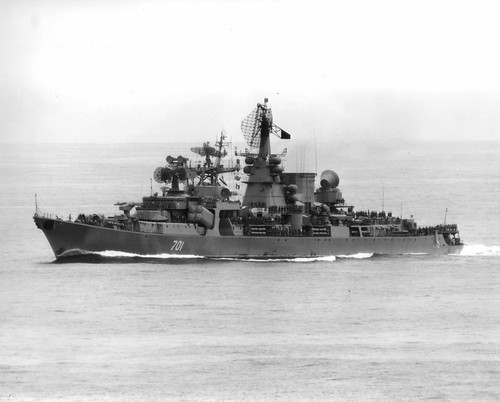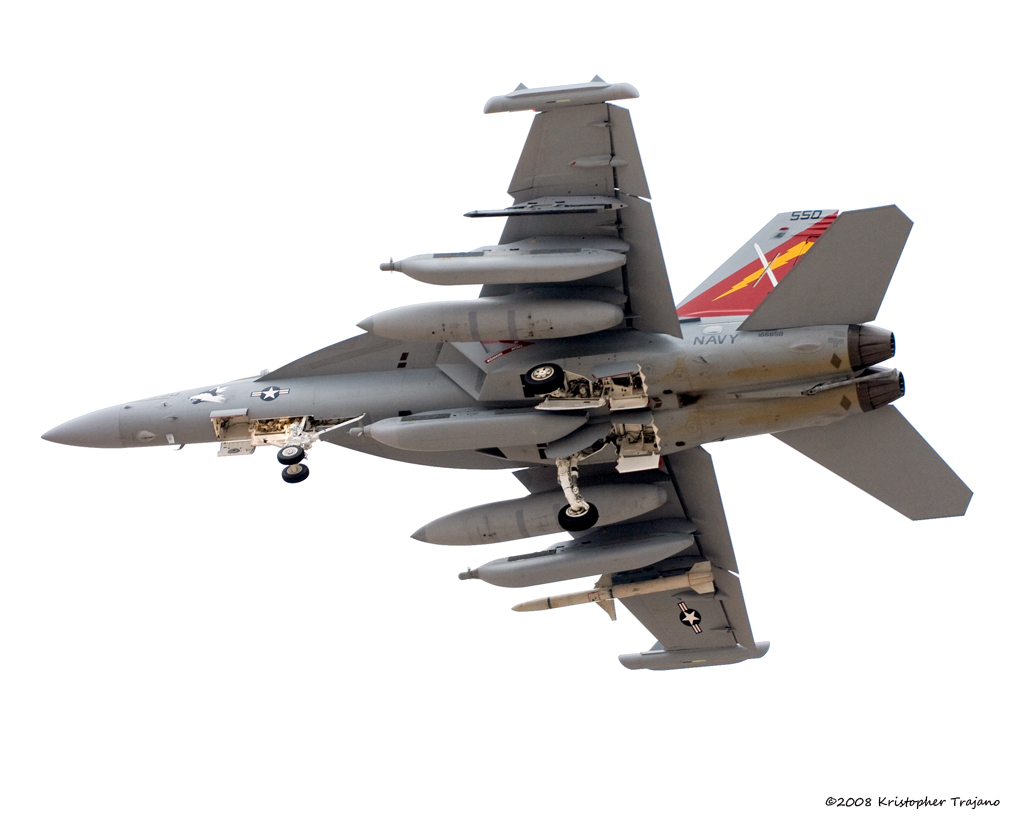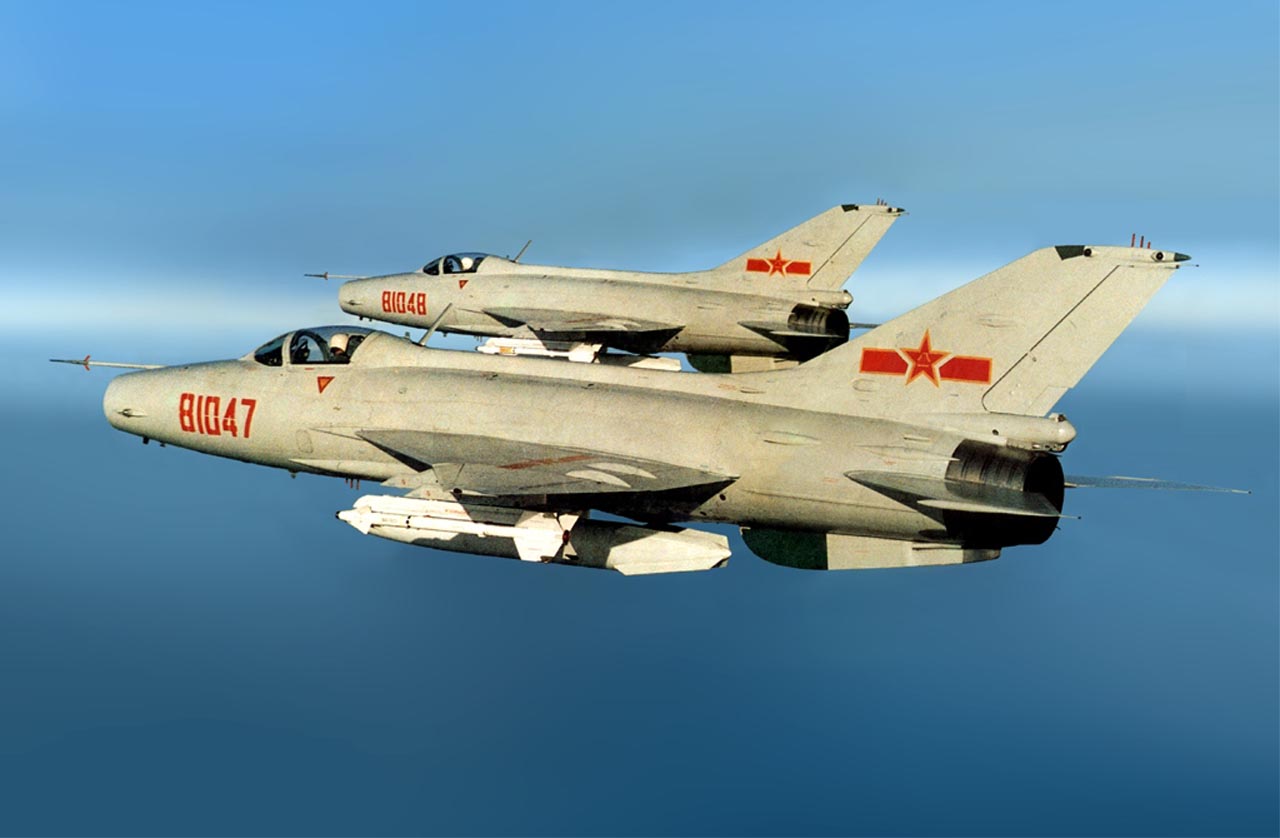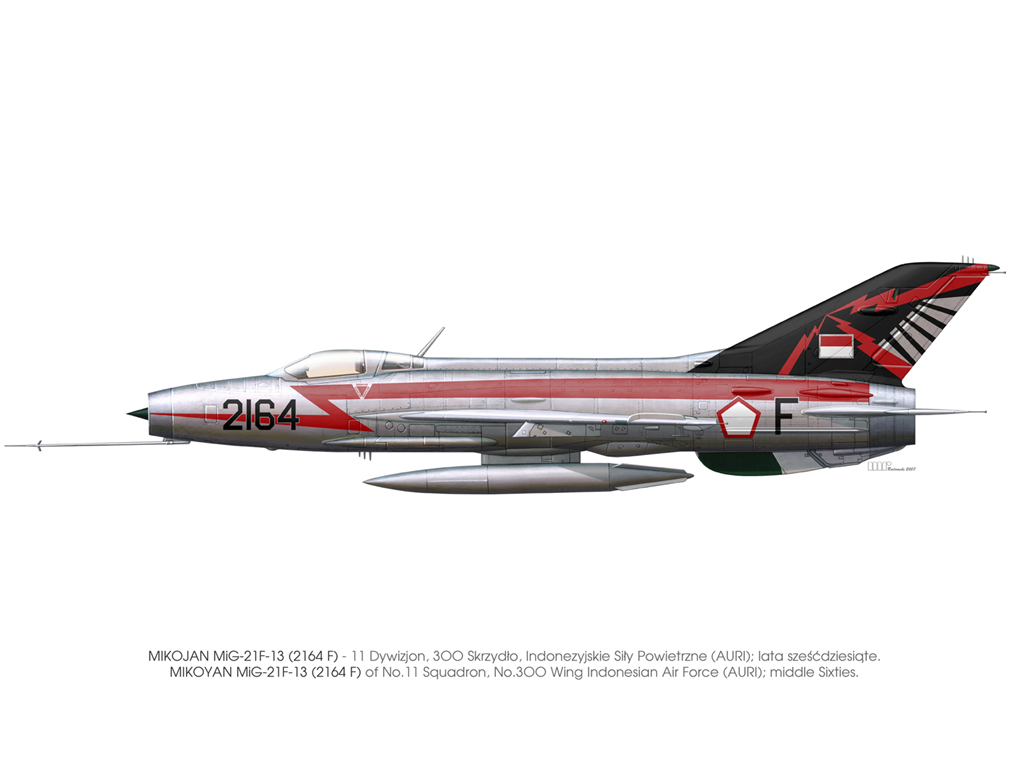www.chinaview.cn 2009-08-28 00:38:51 Print
WASHINGTON, Aug. 27 (Xinhua) -- Somali pirates holding a hijacked ship off the coast of Somalia fired at a U.S. Navy helicopter, the U.S. Navy said Thursday.
The U.S. Naval Forces Central Command said in a statement that a group of pirates aboard the M/V Win Far, a vessel hijacked on April 6, fired "a large caliber weapon" at a U.S. SH-60B helicopter, which was conducting a surveillance flight over the ship.
No one was injured and the helicopter, which is based on the USS Chancellorsville, was not hit, according to the statement.
The incident highlights the ongoing piracy problem in that region even as U.S. and coalition ships patrol the waters to deter pirates.
Piracy off Somalia's coast and the Gulf of Aden has become an urgent global concern recently. Many countries have joined an international naval effort to deal with the challenges in the region.
Friday, August 28, 2009
Pirates fires on U.S. helicopter off Somali coast
CPT John Hallett III, CPT Cory Jenkins
The Department of Defense announced today the death of four soldiers who were supporting Operation Enduring Freedom. they died Tuesday after their vehicle encountered an improvised explosive device in Afghanistan. They were assigned to the 1st Battalion, 17th Infantry Regiment, 5th Stryker Brigade, 2nd Infantry Division, Fort Lewis, Wash.
Killed were:
Cpt. John L. Hallett III, 30, of California, joined the Army in 2001. He first deployed to Iraq in February 2005 and served 13-months with the 1st Battalion, 21st Infantry Regiment, 2nd Brigade, 25th Infantry Division out of Hawaii. In November 2007, he reported to Fort Lewis.
Capt. Cory J. Jenkins, 30, of Arizona.joined the Army in 2007 and attended the Army Medical Department Officer Basic Course before he was assigned to Fort Lewis in March 2009. This was his first deployment and he served as a physician assistant.
Sgt. 1st Class Ronald W. Sawyer, 38, of Trenton, Mo.
Pfc. Dennis M. Williams, 24, of Federal Way, Wash.The Army says a 24-year-old soldier from Federal Way, Wash., was among four members of a Fort Lewis-based Stryker brigade who were killed in southern Afghanistan.
Killed Tuesday was Pfc. Dennis M. Williams. Fort Lewis says Williams enlisted in Seattle in October 2007. This was his first deployment.
My heartfelt condolences and prayers go out to the family and friends of CPT John Hallett III. Words alone cannot express my debt and gratitude for his service and sacrifice. Thank you for your service and fight for our country. May you forever rest in peace.
Thursday, August 27, 2009
russian cruiser peter the great pictures



Aerial port bow view of the Soviet Kirov class nuclear-powered guided missile cruiser FRUNZE underway.


Project 1144.2 soviet navy Kirov class war ship

Russian nuclear-powered missile cruiser "Peter the Great" in Cape Town, South Africa

Kirov class heavy cruisers are the largest and most powerful surface warships in the Russian Navy and the largest and most powerful warships in the world.
Armament: 20 P-700 Granit (SS-N-19 Shipwreck) AShM
14 SS-N-14 Silex ASW cruise missiles (Ushakov only)
12x8 (96) S-300PMU Favorit SA-N-6 Grumble surface-to-air missiles (Ushakov, Lazarev, Nakhimov)
96 S-400 (SA-NX-20 Gargoyle) long-range SAM (Pyotr Velikhy)
192 9K311 Tor (SA-N-9 Gauntlet) point defense SAM
The official line is that the joint maneuvers, which include the Peter the Great, one of Russia's most powerful warships, is simply a good will exercise between two friendly countries.
Russian Warship 'Peter the Great' Arrives at Venezuela
Russian Kirov Class Cruiser Project 1144.2 Peter the Great ( Petr Velikyy )
Labels: Kirov class, russian cruiser
Tuesday, August 25, 2009
russian frigate Krivak class photo gallery


cold war era ,soviet warship shadow american aircraft carrier groups
soviet guided missile frigate ffg Krivak I are anti submarine ships entered service with the Soviet Navy in 1970,A total of 32 ships were built for the Soviet Navy and 8 modified ships for the KGB Maritime Border Guard. Some of the Krivak class frigates remain in Russian Navy service. Ukraine operates one Krivak.
Armament:
2 Osa-MA SAM systems (40 4K-33/SA-N-4 Gecko SAM)
4 URK-5/SS-N-14 Rastrub/Silex SSM/ASW missiles
2 RBU-6000 ASW RL
Monday, August 24, 2009
russian cruiser kara class pictures

Azov
The big anti-submarine ship on fighting service in Mediterranean sea, 1986
Kerch 08 May 2008 - Sevastopol;
the soviet navy build kara class cruiser to destroy US aircraft carriers and submarines.the kara class were build in the cold war
Nikolayev was transferred to the Ukraine after the fall of the USSR, and was scrapped in India in 1994. Petropavlovsk, Tashkent and Vladivostok were sold for scrap between 1994 - 1996. Ochakov went into reserve in the Pacific in the late 1990s. Kerch went into refit in the late 1990s, and is the only member of the class still nominally in commission, serving as flagship of the Black Sea Fleet.
Azov guided missile cruiser
was the trials ship for the new generation SA-N-6 vertical-launch SAM and its associated 'Top Dome' fire control radar. She remained in the Black Sea after one Shtorm and 'Headlight' fire control radar combination had been replaced by the new systems.
soviet Large Anti submarine cruiser "Kerch"; Flag - Russia;
Project 1134B 'Berkut', NATO Codename 'Kara' class;
Builder: 61 Kommunara SY 445, Nikolayev, USSR; Year: 1974;
Displacement: 8,825 tons full load;
Speed: 30 knots; Crew: 400;
Dimensions: 173.4 x 18.5 x 6.4 m;
Propulsion: 3 cruise gas turbines, 12,000 shp, 18 knots;
4 boost gas turbines, 80,000 shp; 30 knots;
Missiles: 2 x 4 URK-5/SS-N-14 Rastrub/Silex SSM/ASW missiles
2 Shtorm SAM system
2 Osa-M SAM systems
Guns: 2 x 2 76.2mm/59cal AK-726 DP
4 x 6 30 mm AK-630 AA
Aviation: Aft helicopter deck and hangar for 1 Ka-25/26/27 series helicopter
Labels: russian cruiser
Sunday, August 23, 2009
EA-18G Growler wallpapers


SD551 (EA-18G-1) During Initial Sea Trial on aircraft carrier USS Eisenhower

Boeing EA-18G Growler 166895 VAQ-129 Vikings NAS Whidbey Island WA Taxiing out at NAF El Centro CA

Landing Nellis AFB, Las Vegas
Aircraft: Boeing EA-18G Growler (166897)Unit: VAQ-129 "Vikings"Base: NAS Whidbey Island, WA That is NOT a Super Hornet !! the brand new EA-18G Growler, the substitute of the EA-6B Prowler. Looks like the Rhino, but note the wingtips and the ALQ-99 jammer pods.
 AN/ALQ-218 (V)2 wideband receiver wingtip pod detail on a Boeing EA-18G Growler 166893 from VAQ-129 Vikings NAS Whidbey Island at NAF El Centro
AN/ALQ-218 (V)2 wideband receiver wingtip pod detail on a Boeing EA-18G Growler 166893 from VAQ-129 Vikings NAS Whidbey Island at NAF El Centro
Labels: navy aircraft
russian destroyers Severomorsk pictures
MIG21 jet fighter fishbed pictures





North Vietnan Air Force - Mikoyan-Gurevich MiG-21 f13

Many of the MiG-21s did not have steerable nose gears, making them difficult to taxi; the sign of a novice Fishbed pilot was the zigzag track he made while moving on the ground.If a pilot put the throttle back on a MiG-21, it would take a long time to spool up again when trying to accelerate. Thus many of those who flew it stayed on afterburners as much as possible.
The MiG-21 was the soviet Union’s first truly modern, second generation jet fighter. Testing began in 1956, and the first version entered service in 1960 as the MiG-21F-13. Soviet designers developed a unique “tailed delta” configuration with a very thin delta wing, which gave the aircrft maneuverability, high speed, good medium-altitude performance, and adequate takeoff and landing characteristics.

Romanian airforce mig21
The MiG-21 could also turn abruptly; you didn’t want to fight one at low speed. Again, the answer was to use the more powerful engines of the US fighters to make it a vertical engagement.

MiG-21 Fishbeds were cone-nosed, supersonic fighters that were somewhat less maneuverable than MiG-17s. They also saw action with the North Vietnamese and became a popular export aircraft, with more than 8,000 produced. Armament:23mm Gsh-23L two barrel cannonOrdnance:Two K-13/AA-2 Atoll or R-60/AA-8 Aphid air-to-air missiles or two 500-kg bombs

Uganda Air Force - Mikoyan-Gurevinch MiG-21Bis



UNITED STATES AIR FORCE
4477th Test & Evaluation Squadron, U.S. Air Force
Tonopah AFB, mid-’80s
During the 1970s, the Foreign Technology Division USAF obtained a number of Soviet-built fighters from various sources, including several MiG-21s. Following their evaluation within the frame of other projects, they gradually entered service with 4477th TES "Red Eagles" at Tonopah AB, in the early 1980s. This formerly Indonesian MiG-21F-13 Fishbed C, was put on display in the VIP hangar of the 4477th TES. It wore the name of the then CO 4477th TES, Lt Col John T "Jack" Manclark ("Bandit #51") on its cockpit rails. A veteran Aggressor pilot with 900 sorties on Northrop F-5E, Manclark flew 301 sorties in the course of Project Constant Peg, the purpose of which was exposure of USAF, USN and USMC figher pilots to enemy technology and tactics. Manclark was CO 4477th TES from November 1985 till November 1987, while this MiG ended in an aviation museum in Eglin, Florida.
Labels: russian jet fighters
























